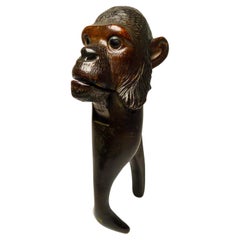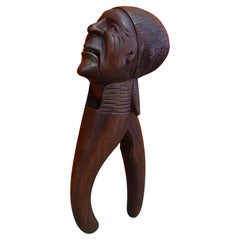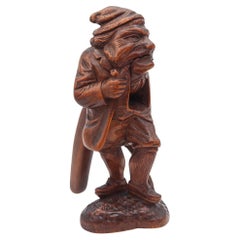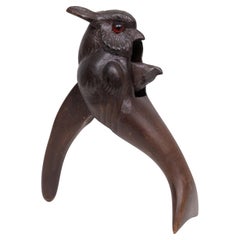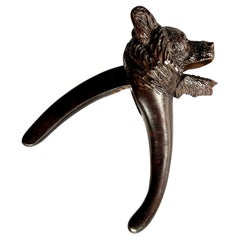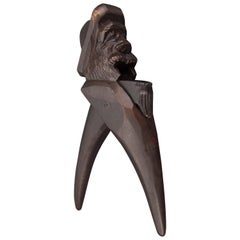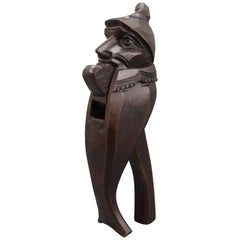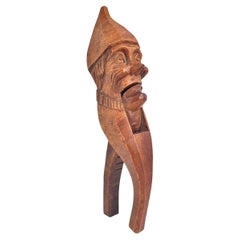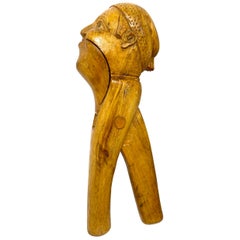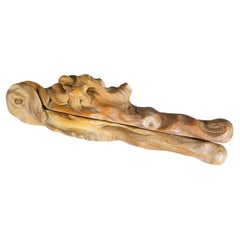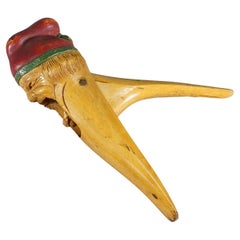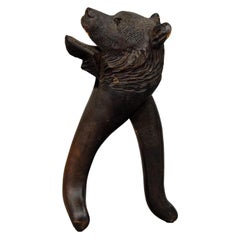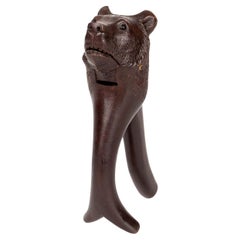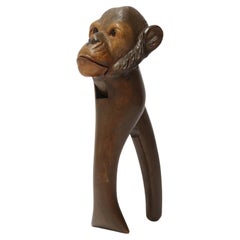Black Forest Nutcracker
Early 20th Century Swiss Black Forest Animal Sculptures
Glass, Wood
Early 20th Century German Black Forest Barware
Wood
Antique Early 1900s German Black Forest Figurative Sculptures
Wood
Vintage 1950s German Black Forest Sculptures and Carvings
Fruitwood
Antique 1890s Swiss Black Forest Outsider and Self Taught Art
Walnut
Vintage 1930s German Black Forest More Dining and Entertaining
Wood
Vintage 1930s German Black Forest More Dining and Entertaining
Wood
Vintage 1930s German Black Forest Sculptures and Carvings
Wood
Antique Early 1900s German Black Forest Sculptures and Carvings
Wood
Vintage 1950s Austrian Black Forest Figurative Sculptures
Wood
Vintage 1930s Swiss Black Forest Animal Sculptures
Wood
Early 20th Century Swiss Black Forest Sculptures and Carvings
Wood
Antique Early 1900s Swiss Black Forest Animal Sculptures
Wood
Vintage 1930s German Black Forest More Dining and Entertaining
Wood
Antique Late 19th Century German Jugendstil Decorative Bowls
Softwood
Early 20th Century German Black Forest Animal Sculptures
Wood
Recent Sales
Early 20th Century German Black Forest More Folk Art
Wood
Antique 1880s German Black Forest Sculptures and Carvings
Walnut
Vintage 1920s Swiss Black Forest Sculptures
Wood
Antique 19th Century English Folk Art Antiquities
Wood
Early 20th Century Swiss Black Forest Sculptures
Wood
Antique Early 1900s German Black Forest Animal Sculptures
Wood
Early 20th Century German Black Forest Animal Sculptures
Wood
Antique 1890s European Folk Art Animal Sculptures
Softwood
Mid-20th Century German Mid-Century Modern Animal Sculptures
Wood
People Also Browsed
Early 20th Century French Art Deco Animal Sculptures
Brass
Antique Late 19th Century English Aesthetic Movement Platters and Serveware
Earthenware
2010s Italian Modern Wall Lights and Sconces
Brass
20th Century Danish Victorian Books
Gold Leaf
Antique 1890s British Late Victorian Books
Paper
Mid-20th Century English Art Deco Mantel Clocks
Brass
Antique 16th Century Indian Jewelry Boxes
Silver
Vintage 1960s American Mid-Century Modern Chairs
Upholstery, Walnut
Vintage 1920s Danish Art Deco More Dining and Entertaining
Metal
Vintage 1970s Mid-Century Modern Decorative Baskets
Rattan
Antique Early 1900s Pillows and Throws
Wool
21st Century and Contemporary Italian Modern Wine Coolers
Rose Quartz
20th Century English Victorian Sports Equipment and Memorabilia
Wood
Vintage 1980s French Mid-Century Modern Wine Coolers
Silver Plate
Antique Late 19th Century Swiss Black Forest Animal Sculptures
Wood
Antique Mid-19th Century American High Victorian Pitchers
Silver Plate
Black Forest Nutcracker For Sale on 1stDibs
How Much is a Black Forest Nutcracker?
A Close Look at Black-forest Furniture
Although its name evokes a mountainous region in Germany, antique Black Forest–style furniture originated in Switzerland. In Brienz, during the early 19th century, wood-carver Christian Fischer recognized the market for tourist souvenirs and helped make the village into a wood-carving destination. The Brienz Woodcarving School was founded in 1884 and had its own small zoo for studying the anatomy of animals, depictions of which are a defining aspect of the style, also known as Brienzerware.
Whimsical sculptures, often depicting bears and other Alpine animals like stags, owls, deer and boars, characterize the work produced in the area. Along with folk art and decorative objects, Black Forest furniture included benches held aloft by bears, umbrella stands carved with acorns and clock cases adorned with scrolling oak leaves. While most wood-carvers adhered to a similar realism in their designs and woods like linden, maple and walnut, their aesthetics varied.
The F. Peter Trauffer family was known for their hand-carved bear sculptures that saw the furry mammals playing instruments, smoking pipes and engaging in all sorts of human activities. They were sometimes detailed with glass eyes and integrated into functional pieces of furniture, including chair backs and bench legs, which generations of cabinetmakers created from the 1880s to the 1950s. Walter Mader and his son Heinrich frequently carved Saint Bernard sculptures that they incorporated into furniture.
As the Black Forest furniture style spread around the world through exhibitions at world’s fairs in the 19th and early 20th centuries, the rusticity of these pieces resonated at a time of increasing urbanization, inspiring other artisans.
Find a collection of antique Black Forest cabinets, bedroom furniture, seating and other items on 1stDibs.
- 1stDibs ExpertApril 5, 2022Franz Anton Ketterer is believed to be the German clockmaker who invented the cuckoo clock, and he is also one of the founding fathers of the Black Forest clockmaking. Today there are many cuckoo clocks, but to be deemed an authentic Black Forest cuckoo is an honor that is bestowed to only those clocks where every essential part is handmade exclusively in the Black Forest region of Germany. Shop a collection of cuckoo clocks from some of the world’s top sellers on 1stDibs.
